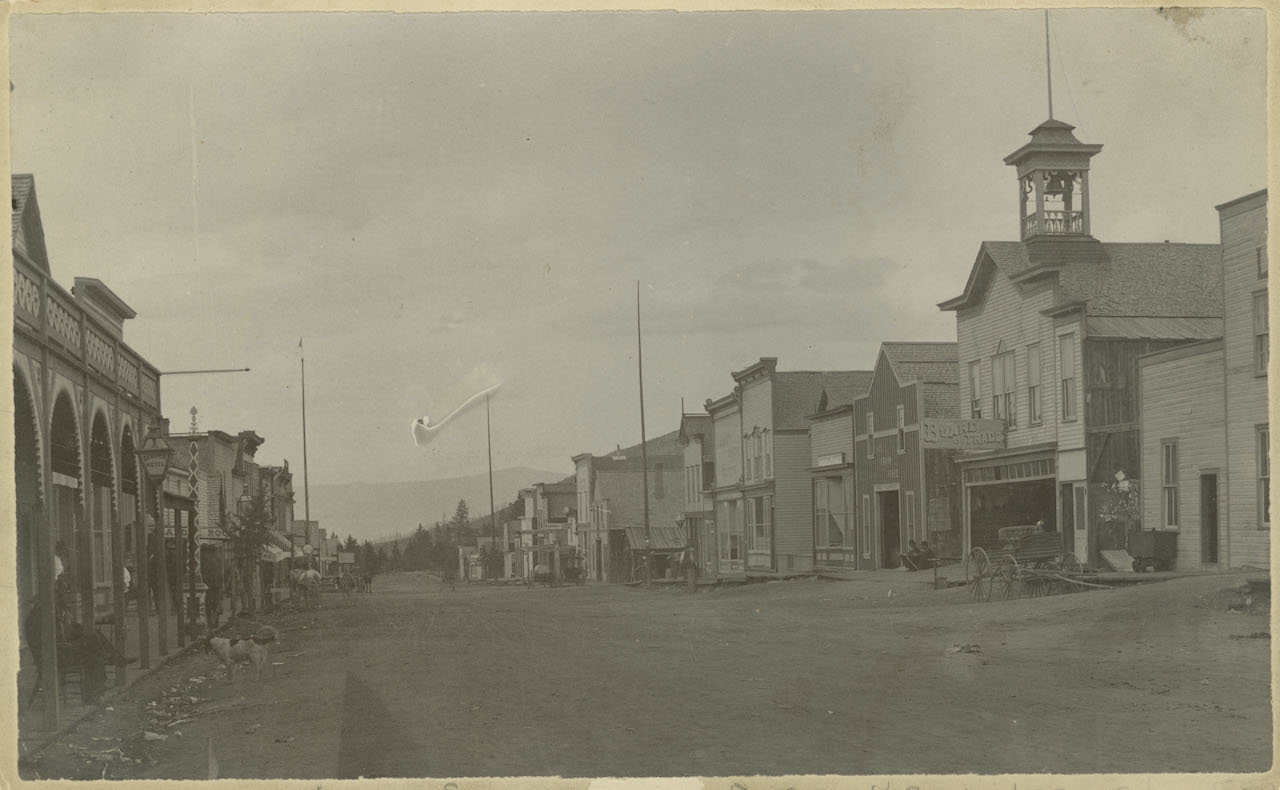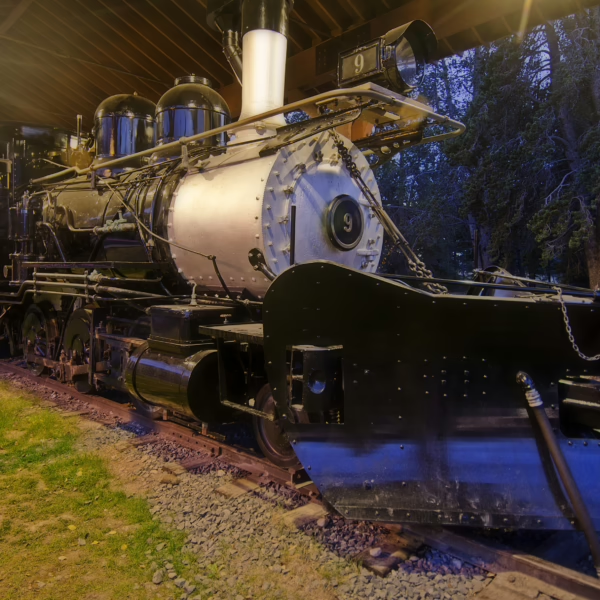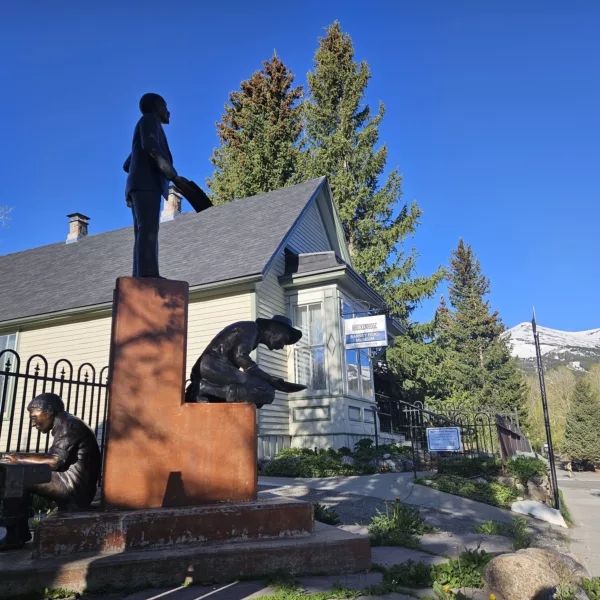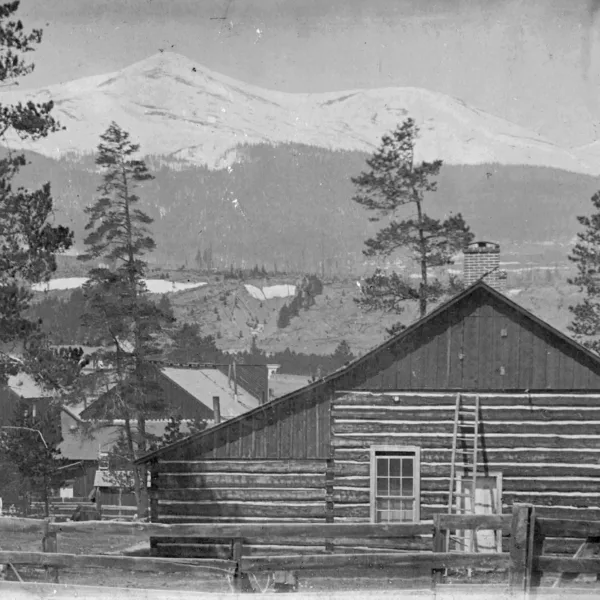El nombre de Breckenridge
April 08, 2022 | Category: Historia de Breckenridge
 ¿Cómo se llamó Breckenridge? Los historiadores llevan décadas debatiéndolo. Los investigadores han estudiado documentos en busca de la verdad. Surgen dos historias, ambas con elementos de verdad. Algunos creen que John Cabell Breckinridge, que fue vicepresidente bajo el mandato de James Buchanan antes de retirarse al Senado de EE.UU. en representación de Kentucky tras finalizar su mandato como vicepresidente, es el homónimo. Otros dicen que el nombre procede de Thomas E. Breckenridge, miembro de las expediciones de Fremont de 1845 y 1848. Bill Fountain estudió los documentos y encajó las piezas del rompecabezas.
¿Cómo se llamó Breckenridge? Los historiadores llevan décadas debatiéndolo. Los investigadores han estudiado documentos en busca de la verdad. Surgen dos historias, ambas con elementos de verdad. Algunos creen que John Cabell Breckinridge, que fue vicepresidente bajo el mandato de James Buchanan antes de retirarse al Senado de EE.UU. en representación de Kentucky tras finalizar su mandato como vicepresidente, es el homónimo. Otros dicen que el nombre procede de Thomas E. Breckenridge, miembro de las expediciones de Fremont de 1845 y 1848. Bill Fountain estudió los documentos y encajó las piezas del rompecabezas.
La historia comienza en 1845, cuando John C. Fremont y 60 hombres, entre ellos Kit Carson, partieron de Bent's Fort, en el río Arkansas, en el territorio de Kansas, en una expedición topográfica. Thomas E. Breckenridge, de 20 años, se unió al grupo en San Luis en mayo de 1845. A finales de agosto, la expedición entró en South Park; el 4 de septiembre habían escalado la cordillera Snowy y acampado antes de descender a Middle Park. En ese momento Breckenridge se dio cuenta de que uno de sus animales de carga había desaparecido. Cada miembro de la expedición había recibido tres burros: uno para montar y dos para transportar provisiones. Breckenridge pensó que sólo tardaría unas horas en encontrar al animal extraviado y volver con el grupo. Después de dos días Breckenridge no había regresado. Fremont envió a Kit Carson y a otro hombre a buscarlo. Cuando por fin regresaron ilesos, un Fremont muy aliviado regañó a Breckenridge. A causa del incidente, Fremont bautizó el paso como Breckenridge Pass en "honor" a Thomas y al burro perdido. (Gracias a la Denver, South Park & Pacific Railroad, Breckenridge Pass se convirtió en Boreas Pass cuando el ferrocarril construyó allí su estación de Boreas. Busque esa historia en otro lugar).
Las memorias de Thomas E. Breckenridge abarcan las expediciones de Fremont de 1845 y 1848. Además de relatar la historia de la designación del paso, Breckenridge declaró que la ciudad de Breckenridge había sido nombrada en su honor. Nacido el 15 de marzo de 1825 en el condado de San Luis (Misuri), Thomas murió el 23 de abril de 1897 en Hannibal (Misuri). En su obituario también se menciona que Breckenridge lleva su nombre.
Por lo tanto, desde el principio, parece que el nombre de la ciudad se deletreaba Breckenridge. Los relatos de los periódicos hasta aproximadamente junio de 1860 y un mapa dibujado ya en 1859 deletreaban el nombre con "e". Pero la ortografía cambió después. ¿Por qué?
Según Fountain: A finales de agosto de 1859, tras enterarse del descubrimiento de oro en Blue River Country (Breckenridge), George E. Spencer, respaldado por capitalistas de Denver, dirigió un grupo a la zona para trazar un pueblo con la intención de vender lotes. Spencer bautizó la ciudad con el nombre del paso cercano donde Breckenridge había pasado dos días recuperando su burro perdido en 1845. Cuando Spencer quiso asegurarse de que se concedería a la nueva ciudad su tan deseada oficina de correos, escribió en la solicitud "Breckinridge" (escrito con "i") en honor al vicepresidente John Cabell Breckinridge. El hecho de que los funcionarios del gobierno concedieran la oficina de correos el 18 de enero de 1860 indica que Spencer tenía vínculos políticos bien desarrollados. (Llegaría a ser senador por Alabama en el periodo de la Reconstrucción). George Spencer se convirtió en el primer jefe de correos de Breckenridge. Cuando los residentes del pueblo se enteraron de que Breckinridge había ofrecido sus servicios a la Confederación en septiembre de 1861; había aceptado un nombramiento como general de brigada en el Ejército de la Confederación en octubre de 1861; y luego fue oficialmente expulsado del Senado el 4 de diciembre de 1861, cambiaron la ortografía de Breckinridge a la original Breckenridge. La población, generalmente de estados del norte no esclavistas, quería expresar su disgusto ante este declarado partidario de la esclavitud.
Una interesante nota a pie de página de esta historia tiene que ver con James Buchanan, el presidente a cuyo servicio estuvo John C. Breckinridge. Ni Buchanan ni Breckinridge se conocían hasta que se convirtieron en presidente y vicepresidente. Después de la elección, no se llevaron muy bien. ¿Quién fue el oponente de Buchanan para la presidencia en la candidatura republicana? Nada menos que John C. Fremont, quien dirigió la expedición de 1845 a la que se unió Thomas E. Breckenridge.
escrito por Sandra F. Mather, PhD




